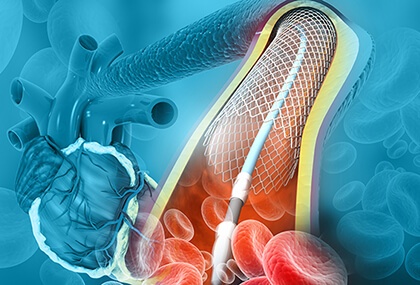The novel technology of drug-eluting stent Supreme was designed to synchronize antiproliferative drug release and leave a base behind to promote healing.

Accelerated endothelial healing after antiproliferative drug release may limit the long-term inflammatory response.
This multicenter, single-blind study included 1600 patients who were randomized 2:1 to receive drug-eluting stent Supreme vs. a classic permanent-polymer everolimus-eluting stent (Xiance).
The primary endpoint was a composite of cardiac death, vessel-related infarction, and clinically justified lesion revascularization. The trial was designed to demonstrate noninferiority at 12 months.
Included patients had acute or chronic coronary syndromes.
Noninferiority was achieved at 12 months, as the primary outcome occurred in 5.4% of patients in the Supreme arm vs. 5.1% in the Xience arm. No difference was observed in device success rate, clinically justified revascularization, or stent thrombosis.
Read also: Abdominal Aortic Aneurysm during the Pandemic: Should They Be Operated or Deferred?
The composite of cardiovascular death and vessel-related infarction occurred in 3.5% of patients for Supreme vs. 4.6% for Xience, a difference that did not reach statistical significance. The rates for clinically justified revascularization and non-justified revascularization were superior in the Supreme arm.
Conclusion
Angioplasty using the Supreme stent was noninferior to that with Xience in patients with chronic and acute coronary syndromes.
CIRCULATIONAHA-120-052482Original Title: Novel Supreme Drug-Eluting Stents With Early Synchronized Antiproliferative Drug Delivery to Inhibit Smooth Muscle Cell Proliferation After Drug-Eluting Stents Implantation in Coronary Artery Disease. Results of the PIONEER III Randomized Clinical Trial.
Reference: Alexandra J Lansky et al. Circulation. 2021 Jun;143(22):2143-2154. doi: 10.1161/CIRCULATIONAHA.120.052482.
Subscribe to our weekly newsletter
Get the latest scientific articles on interventional cardiology





